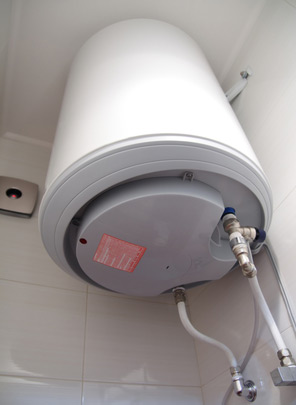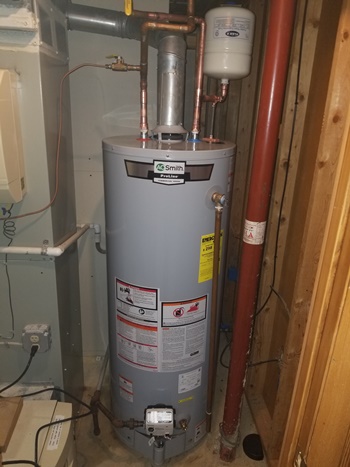Making Sure Durability of Your Home's Hot Water System: Care AdviceEffective Methods to Care for Your Home's Hot Water System Effectively
Making Sure Durability of Your Home's Hot Water System: Care AdviceEffective Methods to Care for Your Home's Hot Water System Effectively
Blog Article
Just about every person may have their own unique idea when it comes to Water Heater Maintenance Tips You Can't Afford to Forget.

Hot water is essential for everyday convenience, whether it's for a rejuvenating shower or cleaning meals. To guarantee your hot water system runs efficiently and lasts longer, regular upkeep is crucial. This short article provides practical pointers and understandings on how to maintain your home's hot water system to stay clear of disturbances and costly repair work.
Intro
Keeping your home's hot water system may appear daunting, but with a few easy steps, you can ensure it runs efficiently for years to find. This overview covers every little thing from understanding your hot water system to do it yourself maintenance suggestions and understanding when to call professional help.
Value of Keeping Your Warm Water System
Regular maintenance not only prolongs the life expectancy of your hot water system however additionally ensures it operates successfully. Neglecting maintenance can bring about decreased effectiveness, greater power bills, and even early failing of the system.
Signs Your Hot Water System Demands Upkeep
Knowing when your hot water system requires focus can prevent major problems. Keep an eye out for signs such as inconsistent water temperature, unusual sounds from the heating system, or rusty water.
Understanding Your Hot Water System
Before diving into upkeep jobs, it's helpful to understand the fundamental elements of your warm water system. Commonly, this includes the water heater itself, pipes, anode rods, and temperature controls.
Monthly Maintenance Tasks
Routine regular monthly checks can assist capture small concerns prior to they escalate.
Flushing the Water Heater
Flushing your water heater eliminates sediment accumulation, enhancing effectiveness and extending its life.
Checking and Replacing Anode Rods
Anode poles protect against rust inside the storage tank. Examining and replacing them when broken is critical.
Checking and Adjusting Temperature Setups
Changing the temperature settings makes certain optimal performance and security.
Do It Yourself Tips for Maintenance
You can do several maintenance jobs yourself to keep your warm water system in top condition.
Looking for Leaks
Consistently examine pipelines and connections for leaks, as these can cause water damages and greater bills.
Evaluating Pressure Relief Valves
Checking the stress safety valve guarantees it operates properly and protects against excessive stress build-up.
Insulating Pipes
Protecting warm water pipelines reduces heat loss and can save power.
When to Call a Professional
While do it yourself maintenance is useful, some concerns need specialist experience.
Complex Concerns Needing Specialist Assistance
Instances include significant leaks, electric troubles, or if your hot water heater is regularly underperforming.
Regular Expert Maintenance Benefits
Expert maintenance can consist of thorough examinations, tune-ups, and making sure conformity with security criteria.
Final thought
Regular maintenance of your home's warm water system is necessary for efficiency, longevity, and price financial savings. By adhering to these pointers and recognizing when to look for specialist assistance, you can make sure a trustworthy supply of hot water without unexpected disruptions.
Water Heater Maintenance Tips
Test the TPR Valve
Shut off the power and the cold-water supply valve. Place a bucket under the pipe connected to the temperature-pressure-release (TPR) valve on the top or side of the tank. (This valve opens if the tank pressure gets too high.) Lift the valve’s tab to let some water out, then let go. If water keeps flowing, drain the tank partway, unscrew the old valve with a pipe wrench, and install a new one. Check the Anode Rod
Put a hose to the tank’s drain cock and let out a few gallons of water. Now fit a 1 1/16-inch socket onto the rod’s hex head on top of the heater (or under its top plate) and unscrew the rod. If it’s less than ½ inch thick or coated with calcium, buy a new one, wrap its threads with Teflon tape, put it back in the tank, and tighten securely. Use this segmented rod if headroom above the tank is limited. Drain the Tank and Wash Out Sediment
Drain the remaining water in the tank into the bucket, then stir up the sediment on the tank’s bottom by briefly opening the cold-water supply valve. Drain and repeat until clean water comes out of the hose. Close the drain cock, refill the tank, and turn its power back on. Adjust the Temperature
Find the temperature dial on the side of the tank and unscrew its cover. Adjust the dial to 120 degrees using a flathead screwdriver. For every 10 degrees the temperature is lowered, you can expect to save up to 5 percent in energy costs. Turn the water heater off or the thermostat down to its lowest setting if you plan to be away from home for more than three days. Insulate the Pipes
Buy some self-sticking 3/8-inch-thick foam pipe insulation that matches the pipes’ diameter. Slide the foam over the hot-and cold-water pipes as far as you can reach. Insulating the cold-water pipe prevents condensation in summer. Peel the tape and squeeze the insulation closed. If the pipe is 6 inches or less from the flue, cover it with 1-inch-thick unfaced fiberglass pipe wrap. https://www.thisoldhouse.com/plumbing/21016402/how-to-maintain-a-water-heater

Hopefully you enjoyed our post on Tips on Maintaining a Water Heater. Many thanks for taking time to read our post. So long as you appreciated our page kindly don't forget to pass it around. I truly appreciate reading our article about Tips on Maintaining a Water Heater.
Click Here Report this page